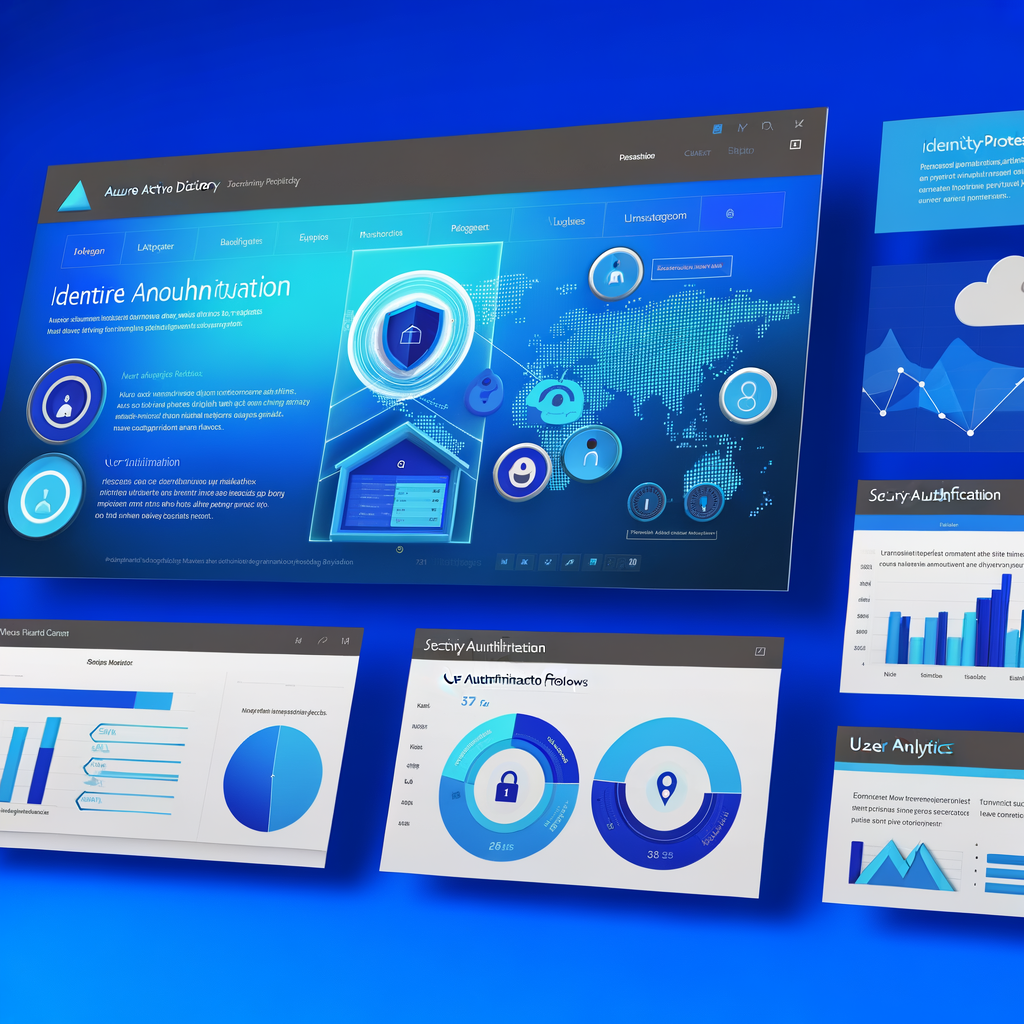Welcome back to our comprehensive Zero-Trust Architecture series. In Part 1, we established the foundational principles of Zero-Trust and Azure AD’s central role. Today, we dive deep into how identity becomes the new security perimeter and explore advanced authentication strategies that form the backbone of any robust Zero-Trust implementation.
The Paradigm Shift: From Network to Identity Perimeter
Traditional security models relied heavily on network perimeters—firewalls, VPNs, and network segmentation to keep the “bad guys” out and assume everyone inside was trustworthy. This approach worked reasonably well when employees worked from offices and accessed applications hosted in corporate data centers.
However, the modern workplace has fundamentally changed this equation:
- Distributed Workforce: Employees access corporate resources from home, coffee shops, airports, and client sites
- Cloud-First Applications: Critical business applications now reside in public clouds, accessible from anywhere
- BYOD Culture: Personal devices regularly access corporate data and applications
- Partner Ecosystems: External contractors, suppliers, and partners require controlled access to specific resources

Azure AD Identity Protection: The Intelligence Layer
Azure AD Identity Protection serves as the brain of your Zero-Trust identity strategy, using machine learning and advanced analytics to detect and respond to identity-based threats in real-time.
Key Capabilities
1. Risk Detection Algorithms
Identity Protection continuously analyzes over 30 billion sign-in attempts daily across Microsoft’s ecosystem to identify suspicious patterns:
Risk Detection Types:
├── Real-time Detections
│ ├── Anonymous IP usage
│ ├── Atypical travel patterns
│ ├── Malware-linked IP addresses
│ └── Unfamiliar sign-in properties
└── Offline Detections
├── Leaked credentials
├── Password spray attacks
├── Impossible travel scenarios
└── Intelligence-based threat detection2. User and Sign-in Risk Scores
Every authentication attempt receives a risk score from Low to High, enabling dynamic policy responses:
| Risk Level | Typical Triggers | Recommended Actions |
|---|---|---|
| Low | Familiar location, trusted device | Allow with standard authentication |
| Medium | New location, unmanaged device | Require MFA, session limitations |
| High | Anonymous IP, leaked credentials | Block access, require password reset |
Multi-Factor Authentication: Beyond Basic Implementation
While MFA adoption has grown significantly, many organizations still implement it as a blanket requirement rather than a strategic, risk-based control. Modern MFA implementation should be both user-friendly and security-conscious.
Strategic MFA Deployment
1. Risk-Based MFA Triggers
// Example Conditional Access Policy Configuration
{
"displayName": "Risk-Based MFA Policy",
"conditions": {
"signInRiskLevels": ["medium", "high"],
"userRiskLevels": ["medium", "high"],
"locations": {
"excludeLocations": ["trusted_corporate_networks"]
}
},
"grantControls": {
"operator": "OR",
"builtInControls": ["mfa", "compliantDevice"]
}
}2. MFA Method Hierarchy
Not all MFA methods are created equal. Prioritize stronger authentication methods:
- Tier 1 (Strongest): FIDO2 security keys, Windows Hello for Business
- Tier 2 (Strong): Microsoft Authenticator with number matching, Certificate-based authentication
- Tier 3 (Moderate): OATH hardware tokens, Microsoft Authenticator notification
- Tier 4 (Basic): SMS, Voice calls (use sparingly due to SIM swapping risks)

Passwordless Authentication: The Future is Now
Passwords remain the weakest link in most security chains. Passwordless authentication eliminates this vulnerability while improving user experience significantly.
Passwordless Implementation Strategy
1. Windows Hello for Business
For Windows-based organizations, Windows Hello for Business provides seamless passwordless authentication using biometrics or PIN with hardware-backed security:
Windows Hello Benefits:
├── Biometric Authentication (fingerprint, face, iris)
├── Hardware-backed security (TPM)
├── Anti-spoofing technology
├── Enterprise policy management
└── Seamless SSO experience2. FIDO2 Security Keys
For maximum security and cross-platform compatibility, FIDO2 security keys provide phishing-resistant authentication:
- Hardware-based cryptographic keys
- Resistance to phishing and man-in-the-middle attacks
- Support for USB, NFC, and Bluetooth connectivity
- Cross-platform compatibility
3. Microsoft Authenticator Passwordless
For mobile-first scenarios, Microsoft Authenticator’s passwordless phone sign-in provides a balance of security and convenience:
// PowerShell script to enable passwordless phone sign-in
# Connect to Azure AD
Connect-AzureAD
# Enable passwordless authentication policy
$policy = Get-AzureADPolicy | Where-Object {$_.Type -eq "AuthenticatorAppSignInPolicy"}
if (!$policy) {
New-AzureADPolicy -Definition @('{"AuthenticatorAppSignInPolicy":{"Enabled":true}}') `
-DisplayName "Enable Authenticator App Sign In" `
-Type "AuthenticatorAppSignInPolicy"
}Advanced Identity Scenarios
B2B Guest Access
External collaboration requires careful identity management. Azure AD B2B enables secure guest access while maintaining Zero-Trust principles:
- Cross-tenant Access Settings: Define trust relationships with partner organizations
- Guest User Lifecycle: Automated provisioning and deprovisioning based on business relationships
- Limited Access Policies: Restrict guest users to specific applications and data
Service Principal and Workload Identities
Zero-Trust extends beyond human identities to include service accounts and applications:
Workload Identity Security:
├── Managed Identities for Azure resources
├── Certificate-based authentication for service principals
├── Key rotation and lifecycle management
├── Principle of least privilege for API access
└── Continuous monitoring and anomaly detectionIdentity Governance and Lifecycle Management
Effective Zero-Trust implementation requires robust identity governance processes:
Access Reviews and Certification
Regular access reviews ensure that users maintain appropriate access levels:
| Review Type | Frequency | Scope | Automation Level |
|---|---|---|---|
| Standard User Access | Quarterly | All applications and groups | Manager approval |
| Privileged Access | Monthly | Admin roles and sensitive apps | Security team review |
| Guest User Access | Bi-annually | All external collaborators | Business sponsor approval |
| Service Accounts | Quarterly | All service principals | Application owner review |
Automated Provisioning and Deprovisioning
Identity lifecycle automation reduces security risks and operational overhead:
// Example HR-driven provisioning flow
{
"trigger": "new_employee_hired",
"actions": [
{
"create_user_account": {
"source": "hr_system",
"attributes": ["department", "role", "manager"]
}
},
{
"assign_groups": {
"based_on": "department_role_matrix"
}
},
{
"provision_access": {
"applications": "role_based_entitlements",
"approval_required": false
}
},
{
"send_welcome_email": {
"include_onboarding_links": true
}
}
]
}Measuring Identity Security Effectiveness
Key metrics to track the success of your identity-centric Zero-Trust implementation:
- Identity Secure Score: Azure AD’s built-in measurement of identity security posture
- MFA Adoption Rate: Percentage of users enabled for multi-factor authentication
- Passwordless Adoption: Users leveraging passwordless authentication methods
- Risk Event Resolution Time: Average time to investigate and remediate identity risks
- Failed Authentication Attempts: Trends in blocked malicious sign-in attempts
Common Implementation Challenges and Solutions
Challenge 1: User Resistance to Additional Security Steps
Solution: Implement risk-based policies that only require additional authentication when necessary. Use passwordless methods to improve rather than hinder user experience.
Challenge 2: Legacy Application Integration
Solution: Use Azure AD Application Proxy for on-premises applications and implement header-based authentication where possible.
Challenge 3: Managing Multiple Identity Providers
Solution: Federate external identity providers with Azure AD to maintain centralized control while preserving user experience.
What’s Next
In Part 3 of our series, we’ll dive deep into Conditional Access policies—the policy engine that brings Zero-Trust principles to life. We’ll cover practical implementation strategies, policy templates, and advanced scenarios that address real-world business requirements.
You’ll learn how to create granular access controls that balance security with user productivity, implement emergency access procedures, and design policies that scale with your organization’s growth.
Continue to Part 3: “Conditional Access Policies – Core Implementation” where we’ll transform these identity concepts into actionable access controls that enforce Zero-Trust principles across your entire digital estate.






